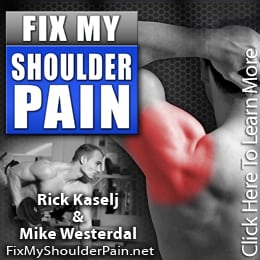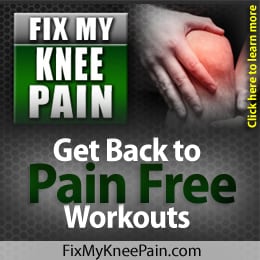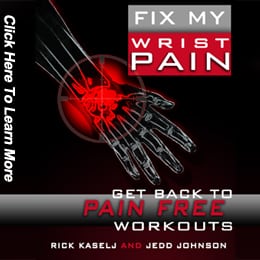What Causes Shoulder Pain?
The shoulder is a mobile area and consists of the glenohumeral joint, the acromioclavicular joint and the sternoclavicular joint. Various problems can affect different parts of the shoulder and cause pain. Parts of the shoulder include bones, muscles, tendons and ligaments. The bones that make up the shoulder joint are the collar bone, the upper arm bone and the shoulder blade. The collar bone is also called the clavicle and it lies in a horizontal position along the shoulder area. The upper arm bone is known as the humerus and it serves as a connector to the shoulder blade and the lower arm. The third bone is the shoulder blade or scapula and it serves as a connector between the humerus and the clavicle. Any injury to these bones can cause pain. Also, if there is any type of injury to the tissues or structures surrounding these bones, shoulder pain can develop and become even worse as time passes.
Shoulder pain may occur due to a fracture or break to any of the shoulder joint bones. Sometimes, a break or fracture may be absent but the shoulder joint bones may become dislocated or dislodged from the joint due to muscle and tendon damage or due to a forceful action on the bone. This can cause significant pain. Bone dislocations can pierce the muscles and tendons surrounding the shoulder and create inflammation. The force leading to bone fracture, breakage or dislocation could occur as a result of a fall or other impact such as a punch to the shoulder. If an individual is experiencing severe pain in the shoulder area and there is a protrusion of bone on the skin, a breakage or dislodgement may be responsible for such pain.
Apart from bone breakage, fractures and dislodgement, shoulder pain can also occur when there is restricted motion around the shoulder joint. A shoulder joint that is functioning normally should allow for some degrees of motion. The absence of sufficient motion in the shoulder joint is also referred to as adhesive capsulitis or a frozen shoulder. An injury to the shoulder region can result in a frozen shoulder. However, there are instances where there may be no known reason for a frozen shoulder occurring. When a person has a frozen shoulder, the shoulder joint capsule contracts and scar tissue begins to form. The presence of scar tissue restricts the movement of the bones in the joint and can cause mild to severe pain.
In normal shoulder joints, the shoulder joint capsule allows fluid and controlled motion. However, certain factors such as age, gender and the existence of illness can increase the likelihood of frozen shoulders occurring. People who are above forty years old have a higher chance of developing frozen shoulders. Women are also more likely than men to get frozen shoulders. In addition to factors which occur naturally such as aging and a person’s gender, it is possible to get a frozen shoulder if the shoulder has been immobilized for a prolonged amount of time. For instance, prolonged immobilization of the shoulder joint could happen if an individual has recently gone through surgery or if recent trauma to the shoulder joint causes forced immobilization. With time, such motion restrictions can cause shoulder pain.
Arthritis in the shoulder is another cause of shoulder pain. When a person has arthritis, there can be a gradual wearing away of the tissue that surrounds the shoulder joint. An example of this type of arthritis is known as osteoarthritis, which is characterized by cartilage degeneration. In some cases, a degeneration of the scapula, humerus and clavicle can also occur, causing pain. Wear and tear removes the cartilage that surrounds the bones and this also affects the ligaments, muscles and tendons that surround the shoulder joint. As cartilage wears away, bones may begin to touch, causing friction and pain. Arthritis could also cause shoulder pain in the form of an inflammation in the shoulder joints. The type of arthritis which is caused by inflammation is referred to as rheumatoid arthritis.
Another source of shoulder pain is a torn rotator cuff which can occur when a person overuses his or her shoulder or exerts too much force on the shoulder joints. A torn rotator cuff is a painful condition that a person becomes more susceptible to as aging occurs or if some type of trauma exists from accidents, falls, collisions or violent pulling forces on the arm or shoulder. Continuous forceful use of the shoulder joints or events that require repetitive motion around the shoulder can also cause a torn rotator cuff. It is a painful condition that can create a strain in muscles, ligaments and tendons that surround the shoulder. With a torn rotator cuff, every motion that involves the damaged area can cause excruciating pain. In rotator cuff injuries, shoulder pain may not be felt until the arm or shoulder is moved or used. This can include arm rotation in any direction or returning the arm to a resting position after use.
Inflammation of the tendons around the shoulder joints can cause swelling, soreness and pain. This condition is also known as tendinitis. Inflammation can also spread to the rotator cuff of the shoulder which causes a thickening. As the tendons around the shoulder thicken, a bony arch in the shoulder blade called the acromion can trap the tendons and cause pain. Thickened tendons place pressure on the rotator cuff and this is referred to as an impingement syndrome. In some cases, rather than thickening, the tendons around the shoulder can compress due to wear and tear from constant activity.
Compressed tendons can also get trapped under the acromion. Compressed tendons, thickened tendons and impingement syndromes all cause shoulder pain. Another source of shoulder pain is bursitis which can accompany inflamed tendons. There are structures known as bursa sacs which protect the shoulder and enable smooth motion as people use their arms. Apart from accidents and other traumatic events, overuse of the shoulder region can gradually cause damage and pain. People who engage in sports or activities that require constant and repetitive use of their arms are more likely to experience shoulder pain. In some cases, pain and discomfort around the shoulder may occur slowly. However, if left untreated, shoulder pain can become much worse and even more widespread.
Rick Kaselj, MS
.



